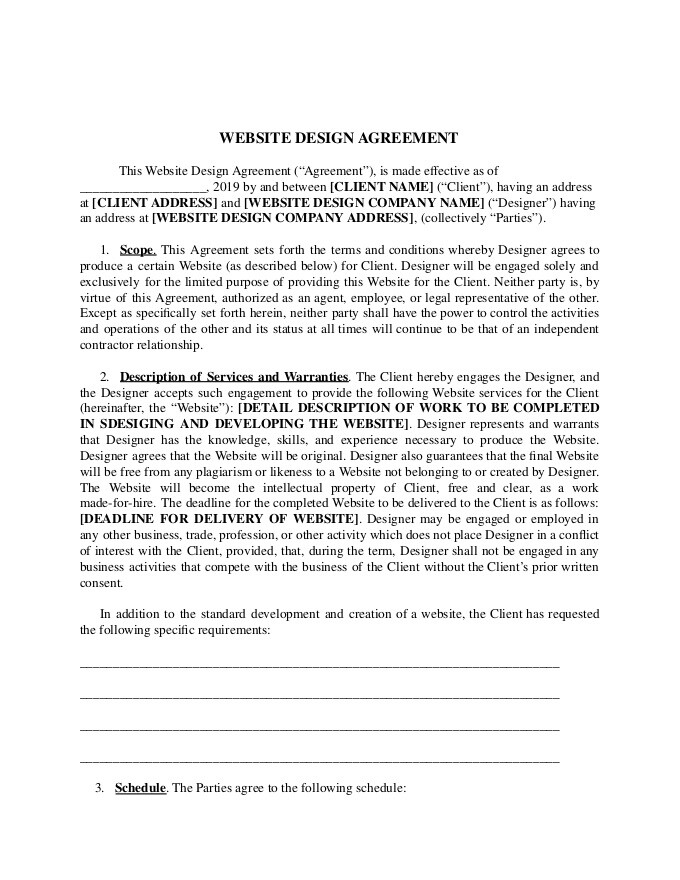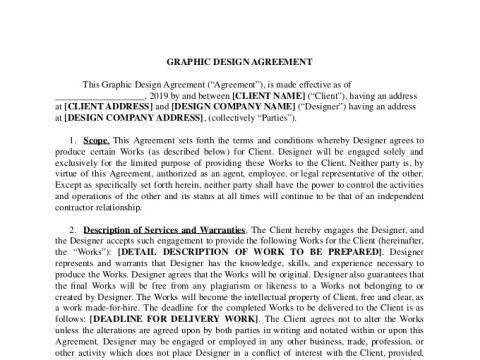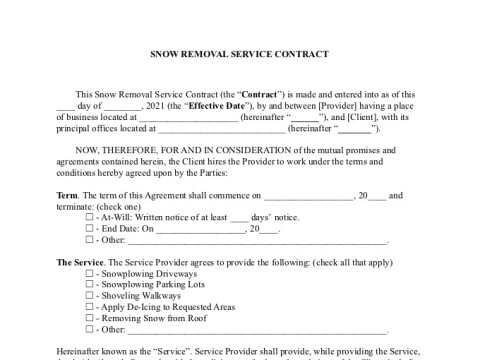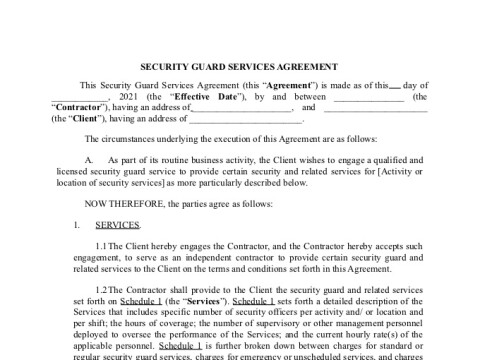Things to Consider with Web Design Contracts
Looking for a web design contract template to use for your business? We’ve got a template ready to be customized for your needs today.
Download Template
Below We’ll Cover:
Make your web design contract template exactly what you need it to be with this information:
- Features of a Web Deign Contract
- Important Clauses
- Best Practices for Web Design Contracts
- Tips for Keeping Your Contract Secure
- Additional Resources
Features of a Web Design Contract
Website design is a creative work that often includes much back-and-forth with your clients. In order to ensure you get paid ad your time is valued, you need a contract. A web design contract template can help, but you’ll want to customize it to fit your specific needs.
When picking a web design contract template, make sure it has these elements:
- The price of the job
- Scope of the work
- When you will deliver the product
- Payment schedule
- Intellectual property rights
Important Clauses
The clauses that you should include in a web design contract are the following:
- Statement of Work – This clause outlines what your work will be. It will clearly tell the client what they can expect to receive from you when you deliver your finished project.
- Termination Clause – If your client decides to terminate the relationship before you complete the website design, consider having compensation built in for the hours worked.
- Revisions clause – Don’t get caught in endless revisions. Clearly state the reasonable amount of revisions for your website design job.
- Payment Clause – State the amount of payment, any pre-payment or deposit requirement, and maximum amount of the total contract. Make sure you state how payments are collected and any late fees charged if the client does not pay.
- Delegation Clause – Web design contractors sometimes need to delegate work to sub-consultants, like graphic designers, freelance writers, or photographers. Add a clause that allows you to do this.
- Warranties Clause – Add a clause indicating you are not offering any warranties other than what is outlined in the contract.
- Ownership Rights Clause – In website design, defining ownership gets tricky because you are the owner of the intellectual property, but your client is the owner of the website and a lot of the content it contains. Clearly define who owns what in your work. Often the designer will retain ownership of the code developed over the course of building the site.
Best Practices for Web Design Contracts
As you use your web design contract template, consider these best practices:
- Consider a provision for out-of-scope requests. This provision will detail how you will handle any requests from your client that are outside the scope of the work as you initially outlined it.
- Protect yourself from copyright infringement. Many web design clients think they can ask you to pull copyrighted images or wording from other sites to use on their designs. This practice, though common, is illegal. Add copyright infringement terminology to the contract so you can refuse to do this. Also, add indemnification language that protects you if your client adds copyrighted items to your web design.
- Name the Legal Jurisdiction near you. Because website design is often done remotely, you may be working with clients in another state or country. In the contract, name your state. If your client sues you, you will have to go to court in your state, which will cost you much less.
- Keep it short. Clients can easily get scared by lengthy, wordy contracts. Make sure it’s thorough, but short enough to not scare away your clients.
- Make sure you clearly state any client responsibilities, such as proofing content to ensure it aligns with the client’s goals and objectives or communicating in a timely manner with you.
Tips for Keeping Your Contract Secure
Your contract needs to be secure and legally binding, and that starts with sending it securely. An electronic contract and signature are legally binding, but you need to know what the process is secure. Use Nitro Sign to send your documents securely and collect signatures to keep your business safe.
Additional Resources


